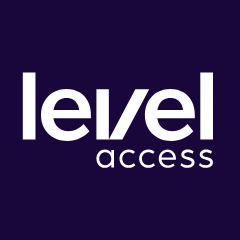Canadian Accessibility Laws: A Guide to the Accessible Canada Act
Dec 4, 2024
More than six million Canadians over the age of 15 have one or more disabilities, whether related to hearing, vision, mobility, memory, or something else. That’s one in five, or 22%, of the country’s population, according to Statistics Canada. For these individuals, being able to participate in society on par with their fellow citizens—shop in the same places, learn at the same schools, and read the same online information—is a fundamental right.
In the U.S., many federal laws that govern accessibility are part of the Americans with Disabilities Act, or ADA. The equivalent to the ADA in Canada is the Accessible Canada Act, or ACA, which was adopted in 2019.
How does the Accessible Canada Act establish Canadian accessibility standards?
The ACA was adopted with the goal of creating a barrier-free Canada by 2040. The ACA is designed to identify, remove, and prevent barriers to accessibility in employment, physical environments, information and communication technologies (ICT), communication outside of ICT, programs and services, procurement of goods and services, and transportation.
Like Title II of the ADA, the Accessible Canada Act applies to federally regulated organizations. This includes Parliament, Crown corporations, the federal government, and private-sector businesses under federal jurisdiction, such as banking, telecommunications, and transportation. Organizations within the scope of this policy are required to develop accessibility plans, receive feedback on those plans, and publish updated reports every three years. In tandem with the law’s enactment, the Canadian government created an Accessibility Commissioner who is responsible for enforcing compliance with the ACA.
The first set of rules that govern how impacted organizations comply with the ACA were published in 2021 under the Accessible Canada Regulations. The ACA also created Accessibility Standards Canada (ASC) to develop Canadian accessibility standards and advance accessibility research.
What provinces in Canada have accessibility laws?
Many individual provinces in Canada have established accessibility legislation that complements the Accessible Canada Act. For some provinces, these laws expand the reach of the ACA, as well as the standards for compliance.
-
The Accessibility for Ontarians with Disabilities Act (AODA)
The AODA became law in 2005 in Ontario. As such, it has been on the books longer than any other accessibility legislation in Canada. The AODA requires both public- and private-sector organizations to follow established sets of accessibility standards when dealing with the public. The standards fall into five categories: information and communications, customer service, transportation, employment, and design of public spaces.
The Accessibility for Ontarians with Disabilities Act establishes specific standards for Canadian website accessibility laws by adopting WCAG 2.0, offering organizations a technical framework for providing barrier-free online experiences. The AODA also goes further than the ACA in that it not only requires public spaces to be more accessible, but also requires that businesses train their staff in accessibility, referred to as AODA training.
-
The Accessibility for Manitobans Act
In 2023, Manitoba became the second province in Canada to pass accessibility laws when it enacted the Accessibility for Manitobans Act. With this law, Manitoba expanded on the ACA by requiring all public- and private-sector organizations to comply with the law.
The Act’s structure is similar to that of Ontario’s law: It currently focuses on five mandatory accessibility standards that apply to both the public and private sectors. And, like the AODA, it includes an Accessible Information and Communications Standard that covers online information and uses WCAG 2.0 as the compliance benchmark.
-
The Nova Scotia Accessibility Act
In 2017, the province of Nova Scotia passed its own legislation aimed at developing accessibility standards in six areas, including information and communication. In defining “barrier,” the act?specifically mentions potential barriers in technology. Nova Scotia’s law is similar in scope to Ontario’s and Manitoba’s in that it applies to all organizations within the province. The government is currently working on establishing specific accessibility standards for each of the areas addressed.
-
The Accessible British Columbia Act
In 2021, British Columbia adopted the Accessible British Columbia Act, which aligns closely with the ACA. The most limited in scope of the provincial accessibility laws, this act initially applies only to British Columbia’s government, requiring that government entities create accessibility plans that are reviewed and revised every three years.
-
The Newfoundland and Labrador Accessibility Act
In December of 2021, Newfoundland and Labrador became the most recent Canadian province to adopt its own accessibility law. In alignment with the ACA, the act’s initial focus is developing accessibility standards for the province. The first standards Newfoundland and Labrador aims to establish are for customer service and ICT.
What’s next for Canadian accessibility laws?
At both the federal and provincial level, most next steps outlined by accessibility-focused laws are to establish standards for accessibility compliance. So far, Accessibility Standards Canada has developed national accessibility standards for ICT, which has adopted the European standard for digital accessibility, EN 301 549. Notably, this standard is in alignment with international best practices for digital accessibility and adopts WCAG 2.0 for conformance. The ASC currently has 16 additional standards under development, and recently published a technical guide for Accessible and Equitable Artificial Intelligence Systems.
An Innovative Solution
Level Access has developed a comprehensive accessibility solution to help organizations conform with WCAG and achieve and maintain compliance with Canadian accessibility laws. While WCAG 2.0 is often referenced in legislation, we support conformance with the most recent WCAG standards. To determine whether your assets comply, request our Must-Have WCAG Checklist, which features an interactive set of guidelines that will help you focus your accessibility efforts. Rather get started right away?
FAQ
Do public businesses have to comply with Canadian accessibility standards?
Public businesses might have to comply with Canadian accessibility standards if they are regulated by the federal government or doing business in a province that has public accessibility standards, such as Ontario, Nova Scotia, or Manitoba. Businesses should note that they could be subject to Canadian accessibility laws based on where they have customer interactions, not just on where the business is located.
What are the web accessibility standards of the government of Canada?
The federal web accessibility standards that the government of Canada must conform with are WCAG 2.0 and the standards set forth in EN 301 549. In addition, some provinces—such as Ontario and Manitoba—have their own province-specific digital accessibility laws, which also require WCAG 2.0 conformance.
Are organizations outside of Canada affected by the Accessible Canada Act?
Yes, organizations that are located outside of Canada may have to comply with the Accessible Canada Act if they do business within Canada. Examples of doing business within Canada could include sales to customers in Canada or customers accessing organizational websites from Canada.
Subscribe for updates



